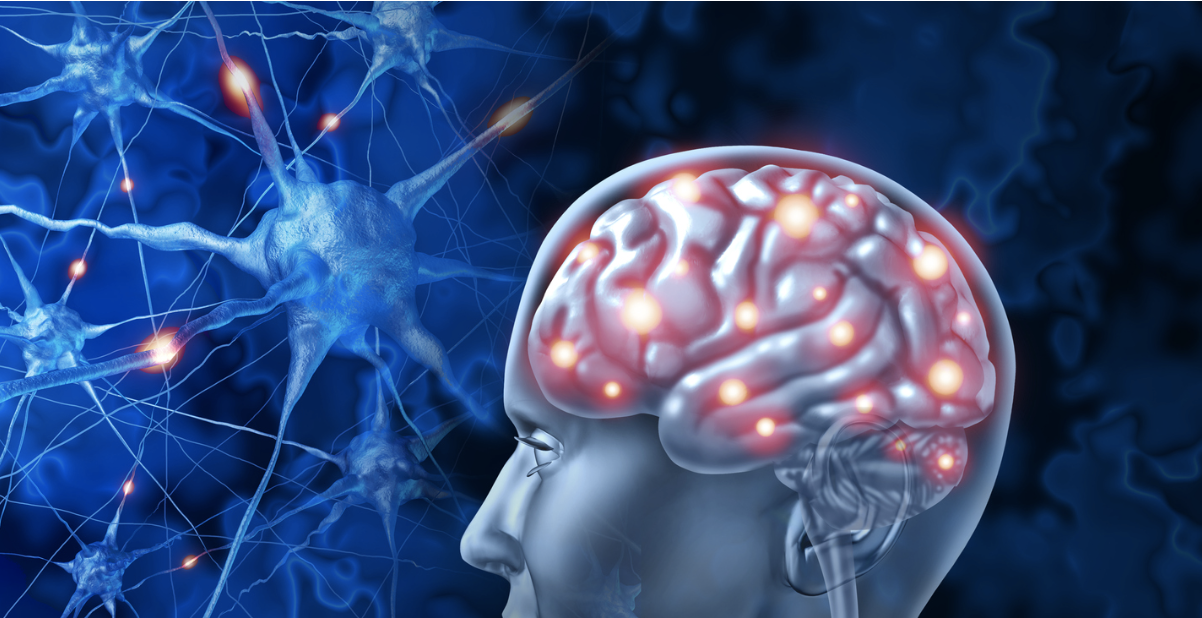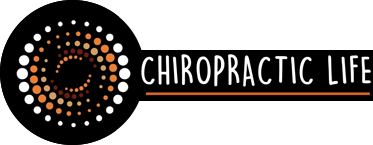
Introduction
Have you ever wondered why some habits stick while others fall flat on their face? Since it’s a brand new day, it’s time for habit and goal awareness. People set goals and new habits only at the beginning of the year, and too often, they fizzle out. We will show you how to use neuroscience to hack your habits and goals productively. We will also show you where chiropractic care fits and how it supports this process. Are you ready to dive in?
What is Neuroplasticity?
First, to hack your habits, we need to elicit neuroplasticity. What’s that? Neuroplasticity is a change in the brain and its circuitry. Your brain and spine are made up of neurons that communicate with each other and form neural pathways; you’ve got motor neurons that come from your brain to your body and sensory neurons that travel from your body to your brain. Lo and behold, your spinal cord is the powerful highway allowing communication to travel between your brain and body.
Habits are essentially neural pathways that get innervated, and they code for a certain behaviour. You might notice some unhelpful habits you want to get rid of but can’t seem to shake. Why? It’s because the neural pathways for these habits are strong and oh-so-rewarding. However, they’re not permanent, you can reshape them, or rather…rewire them!
Why is Rewiring So Hard?
Remember your frustration, confusion, and annoyance when trying to change a habit or learn something new? This is what the rewiring process feels like when you’re about to form a new pathway in the brain and new synaptic connections (1,2). However, most people don’t realise they’re on the precipice of something amazing – so what do they do? They back off and avoid this discomfort. However, studies show that backing off and trying to avoid the unwanted habit worsens things (3).
Let’s talk about goals vs habits
Your goals come from your prefrontal cortex, where you use cognition and planning. On the other hand, your habits are processed by your sensorimotor cortex, where it’s a little less conscious and a little more trigger, behaviour and rewards-based 4).
For a long time, neuroscientists used to believe that these systems competed, but now we know that they can work together in harmony (5). You can use your goals to rewire your habits and create habits that amplify your goals!
So, how do you rewire your habits:
1. Take advantage of your trigger, behaviour and reward system
Hack that system! Let’s assume you’re trying to change the habit of eating junk food. First, change your internal and external environment so the trigger for the unwanted behaviour isn’t there anymore. For example, avoid passing the junk food shop and make sure you’re well-fed before shopping.
Secondly, change the behaviour. For example, instead of eating junk food, still eat, but replace the food with something healthy and nourishing.
Thirdly, engage your reward system. Perhaps eating healthy food doesn’t trigger your reward system…yet! But you can reward yourself with something that makes you feel good and do it at the same time as eating healthy food. For example, you adore listening to Michael Buble and it makes your heart sing? Okay! Listen to that music while eating healthy food – your brain will start associating reward endorphins with healthy food.
2. Integrate the prefrontal cortex’s goal-direction to set habits
If you have a strong reason directing your behaviour, it’s so much easier to change a habit. Sit down to ask yourself what you want to accomplish and why:
“What does it mean to me?”
“Why is it so important?”
“What will happen when I accomplish this?”
“What will happen if I don’t accomplish this?”
3. Use repetition to strengthen synaptic connections and neural pathways
That’s right! You can’t expect to perform a good habit once or twice and be forever transformed! The brain needs repetition to form new neural pathways – so be kind and patient with yourself. Refer to the previous questions above – these will help you stay connected with your why!
How chiropractic care contributes to neuroplasticity
Now here’s where it gets even more interesting! The latest studies have discovered that chiropractic care can support the rewiring process!
First of all, chiropractic adjustments can stimulate the vagus nerve. The vagus nerve comes from your brainstem and travels all throughout the body. It is responsible for regulating beneficial autonomic functions such as digestion, breathing, heart rate, and hormonal signalling. A healthily stimulated vagus nerve results in a healthy, regulated body6, even improving neurotransmitter levels in the prefrontal cortex. A recent study has found that chiropractic care can support the treatment of major depression7.
The connection between spinal manipulation and neuroplasticity has been gaining more interest6. Neuroplasticity was measured in stroke patients after just one adjustment8 and even more in longer-term chiropractic care plans9. Chiropractic care has also been shown to rewire the nervous system, alleviating how we feel tonic pain10. Remember that the literature is young and needs more research for conclusive answers about how chiropractic care supports neuroplasticity.
With what we know so far, if chiropractic care can improve the way our nervous system works, then it can support the habit-rewiring process in multiple ways: 1) by supporting our autonomic nervous system as we change our trigger, behaviour and reward loops, and 2) by supporting the prefrontal cortex and our goal-driven influence on our habits.
So next time you think about setting goals or changing your habits, let’s make them stick! Consider chiropractic care and how it can support your nervous system in smoothly integrating these changes!
Chiropractic Life’s Commitment
At Chiropractic Life, we deliver neurostructural corrective chiropractic at our practices across Australia and New Zealand. Our approach focuses on correcting and realigning the spine and posture. This enables the nervous system to be free from interference and the brain to receive feedback from the spine and deliver the right information to the body through optimum brain-to-body communication.
Explore www.chiropracticlife.com.au/locations to find a convenient location near you.
Optimise your brain-to-body connections today with Chiropractic Life.
About the author:
Dr Hala El Khoury is a neuroscientist, counsellor, business owner, and mother of 2. Having completed her PhD at the University of Sydney, her thesis explored the use of photobiomodulation in neuroregeneration and neuroprotection. This research was relevant for healthy brains, as well as brains experiencing neurodegenerative diseases, such as Alzheimer’s and Parkinson’s. She’s the wife of chiropractor Dr Justin Chau, and together their focus is to bring health and empowerment through education to their communities. Her passion is to spread the word that neuroplasticity is possible and that people can strongly influence their lives when they use the right tools, such as lifestyle, mindset, photobiomodulation and chiropractic care.
References:
1. Baker R.S., D’Mello S.K., Rodrigo M.M.T., Graesser A.C. (2022). Better to be frustrated than bored: The incidence, persistence, and impact of learners’ cognitive–affective states during interactions with three different computer-based learning environments. International Journal of Human-Computer Studies,10.1016/j.ijhcs.2009.12.003
2. San Juan, A. Y., & Murai, Y. (2022). Turning frustration into learning opportunities during maker activities: A review of literature: Frustration in maker spaces. International Journal of Child-Computer Interaction. https://doi.org/10.1016/j.ijcci.2022.100519
3. Horváth K, Nemeth D, Janacsek K. Inhibitory control hinders habit change. Sci Rep. 2022 May 18;12(1):8338. doi: 10.1038/s41598-022-11971-6. PMID: 35585209; PMCID: PMC9117234.
4. Mendelsohn AI. Creatures of Habit: The Neuroscience of Habit and Purposeful Behavior. Biol Psychiatry. 2019 Jun 1;85(11):e49-e51. doi: 10.1016/j.biopsych.2019.03.978. PMID: 31122343; PMCID: PMC6701929.
5. Kruglanski, A. W., & Szumowska, E. (2020). Habitual Behavior Is Goal-Driven. Perspectives on Psychological Science, 15(5), 1256-1271. https://doi.org/10.1177/1745691620917676
6. Maltese PE, Michelini S, Baronio M, Bertelli M. Molecular foundations of chiropractic therapy. Acta Biomed. 2019 Sep 30;90(10-S):93-102. doi: 10.23750/abm.v90i10-S.8768. PMID: 31577263; PMCID: PMC7233649.
7. Kiani AK, Maltese PE, Dautaj A, Paolacci S, Kurti D, Picotti PM, Bertelli M. Neurobiological basis of chiropractic manipulative treatment of the spine in the care of major depression. Acta Biomed. 2020 Nov 9;91(13-S):e2020006. doi: 10.23750/abm.v91i13-S.10536. PMID: 33170171; PMCID: PMC8023121.
8. Holt, K., Niazi, I.K., Nedergaard, R.W. et al. The effects of a single session of chiropractic care on strength, cortical drive, and spinal excitability in stroke patients. Sci Rep 9, 2673 (2019). https://doi.org/10.1038/s41598-019-39577-5
9. Navid MS, Niazi IK, Lelic D, Amjad I, Kumari N, Shafique M, Holt K, Rashid U, Drewes AM, Haavik H. Chiropractic Spinal Adjustment Increases the Cortical Drive to the Lower Limb Muscle in Chronic Stroke Patients. Front Neurol. 2022 Feb 4;12:747261. doi: 10.3389/fneur.2021.747261. PMID: 35185747; PMCID: PMC8854235..
10. Navid, M.S., Lelic, D., Niazi, I.K. et al. The effects of chiropractic spinal manipulation on central processing of tonic pain – a pilot study using standardized low-resolution brain electromagnetic tomography (sLORETA). Sci Rep 9, 6925 (2019). https://doi.org/10.1038/s41598-019-42984-3

Recent Comments